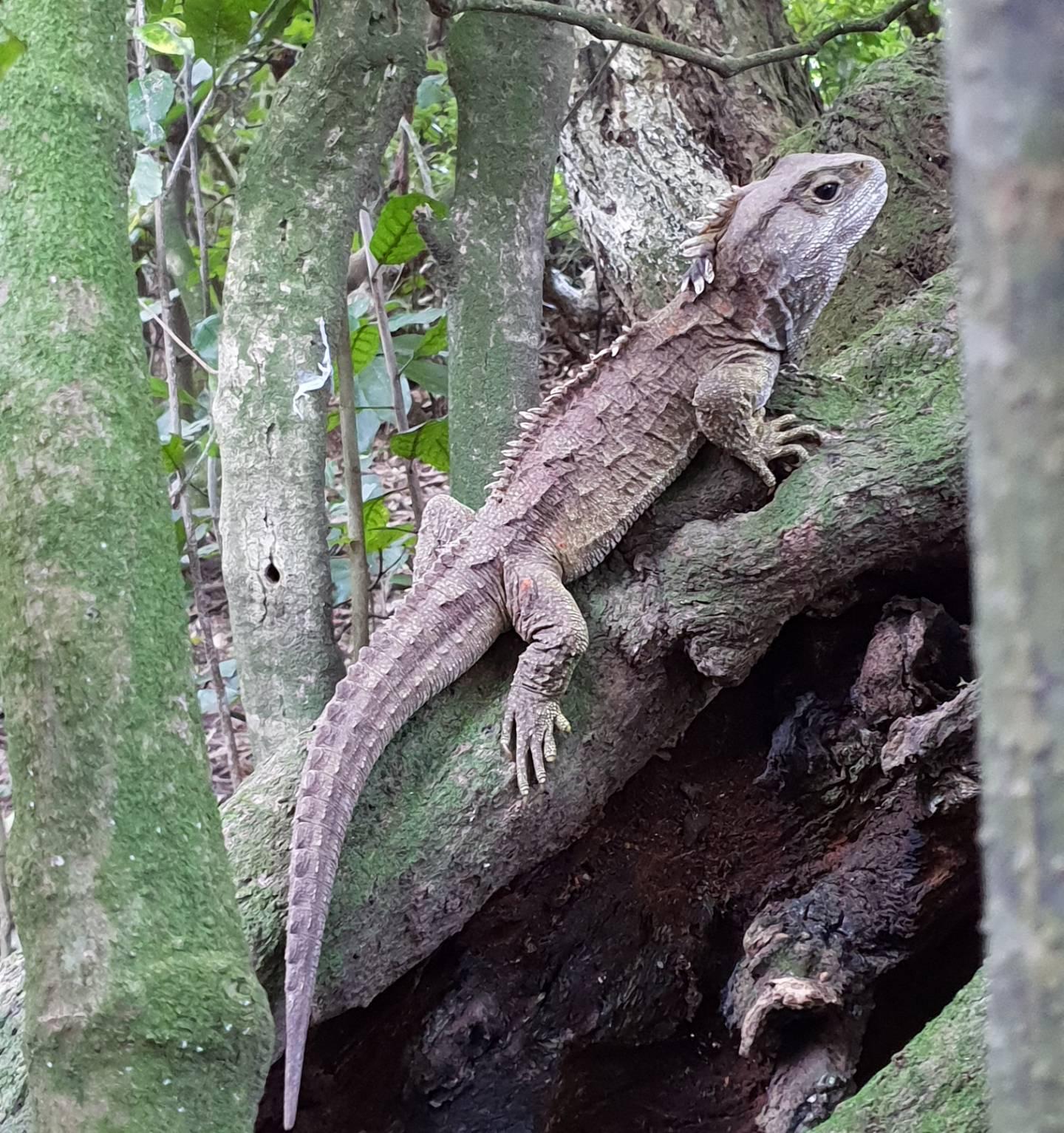Dinosaur relative’s genome linked to mammals

Tuatara - photo by Nicola Nelson
Scientists from the University of Adelaide and South Australian Museum have collaborated with Otago University, New Zealand and a global team to sequence the genome of the tuatara – a rare reptile whose ancestors once roamed the earth with dinosaurs.
The findings on this remarkable living, single species reptile, which originated in the Triassic period around 250 million years ago and is only found in New Zealand, have been published in Nature.
Professor David Adelson’s lab of the University of Adelaide’s Department of Molecular and Biomedical Science and Dr Terry Bertozzi of the South Australian Museum carried out key analysis of the tuatara genome that revealed an unusual architecture, half-way between mammal and reptile.
“The tuatara is the last surviving species of a reptile group that roamed the earth with the dinosaurs and remarkably, its genome shares features with those of mammals such as the platypus and echidna."Professor David Adelson, the University of Adelaide.
“The tuatara is the last surviving species of a reptile group that roamed the earth with the dinosaurs and remarkably, its genome shares features with those of mammals such as the platypus and echidna,” said Professor Adelson.
The key contribution of Professor Adelson’s lab and Dr Bertozzi was to demonstrate that some sequences of DNA that move or jump location, referred to as ‘jumping genes’, found in the tuatara are most similar to those found in platypus while others are more similar to those in lizards.
“The tuatara genome contained about 4% jumping genes that are common in reptiles, about 10% common in monotremes (platypus and echidna) and less than 1% common in placental mammals such as humans,” said Professor Adelson.
“This was a highly unusual observation and indicated that the tuatara genome is an odd combination of both mammalian and reptilian components.”
“The unusual sharing of both monotreme and reptile-like repetitive elements is a clear indication of shared ancestry albeit a long time ago,” said Dr Bertozzi.
With no close relatives, the position of tuatara on the tree of life has long been contentious. The research places tuatara firmly in the branch shared with lizards and snakes, but they appear to have split off and been their own species for around 250 million years – an enormous amount of time given primates only originated around 65 million years ago, and hominids, from which humans descend, originated approximately six million years ago.
“It has been a privilege to be part of this project, which has been a true, historic collaboration with local iwi (Māori indigenous tribe) Ngātiwai. While this is largely fundamental science, I expect it to yield new ways of thinking about our own genome structure that may have relevance to our health,” said Professor Adelson.
Media Contacts:
Professor David Adelson
Department of Molecular and Biomedical Science
The University of Adelaide
Mobile: +61 (0) 459 807 714
Email: david.adelson@adelaide.edu.au
Kelly Brown
Communications Coordinator
External Relations
The University of Adelaide
Phone: +61 (08) 8313 394
Email: k.brown@adelaide.edu.au
Ashleigh Glynn
Communications Officer
South Australian Museum
Mobile: +61 (0) 466 389 019
Email: ashleigh.glynn@samuseum.sa.gov.au
